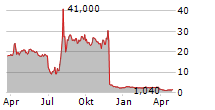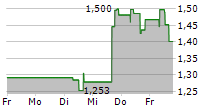- Study in a TSC mouse model further demonstrates simufilam's anti-seizure activity
- Study conducted in collaboration with TSC Alliance using a well-accepted Tsc1-knockout model
- First clinical study for simufilam in TSC-related epilepsy expected to begin in H1 2026
AUSTIN, Texas, Aug. 04, 2025 (GLOBE NEWSWIRE) -- Cassava Sciences, Inc. (NASDAQ: SAVA, "Cassava", the "Company"), a clinical-stage biotechnology company focused on developing novel treatments for central nervous system (CNS) disorders, today reported positive preclinical results of a study evaluating simufilam in a well-accepted mouse model of tuberous sclerosis complex (TSC)-related epilepsy.
Most individuals with TSC experience lifelong seizures associated with severe comorbidities, and nearly two-thirds of those patients are refractory to available treatments1. Simufilam, a proprietary oral small molecule, demonstrated a beneficial effect on seizure activity with a positive dose response in this model. Importantly, the results are consistent with findings published in Science Translational Medicine1 of prior research conducted with simufilam at Yale School of Medicine in another mouse model. This new research further supports the potential use of simufilam as a novel, first-in-class treatment for TSC-related epilepsy.
The study was conducted in collaboration with the TSC Alliance and the TSC Preclinical Consortium using an animal model of TSC-related epilepsy, the Tsc1 conditional knockout (CKO) mouse line (Tsc1-CKO)2. These mice develop spontaneous seizures and are used by the TSC Alliance to evaluate the effectiveness and safety of novel and repurposed therapeutics in the potential treatment of TSC-related epilepsy. The study was conducted by PsychoGenics, Inc., the TSC Preclinical Consortium's research partner.
The Tsc1-CKO mice were treated with several doses of simufilam. Seizure activity was monitored for approximately three weeks after onset, and simufilam was evaluated against treatment with vehicle alone. The data showed that simufilam attenuated the progression of seizure activity, with a statistically significant correlation between simufilam dose and the number of seizures by the end of the study. Not all parameters measured reached statistical significance. The Company intends to present data and analyses in an upcoming scientific conference and publication.
"We are excited that this independent study bolsters previous findings in a separate animal model of focal onset epilepsy. Based on these data, we believe that simufilam could represent a new approach to addressing the persistent unmet need in the TSC community," said Angélique Bordey, PhD, Senior Vice President, Neuroscience of Cassava.
"Epilepsy is considered the most prevalent and challenging manifestation of TSC. Patients urgently need more treatment options. Positive results from two independent preclinical animal studies enhance our conviction as we prepare to advance simufilam to the clinic for this new indication," said Rick Barry, President and Chief Executive Officer of Cassava. "We intend to initiate a proof-of-concept study of simufilam in TSC-related epilepsy in the first half of 2026."
About the TSC Alliance
The TSC Alliance, an internationally recognized organization, is dedicated to improving the quality of life for everyone affected by tuberous sclerosis complex by catalyzing new treatments, driving research toward a cure, and expanding access to lifelong support. We drive research, improve the quality of care and access, and advocate for all affected by the disease. The TSC community is our strongest ally. The collaboration of individuals and families, along with the partnership of other organizations, fuels our work to ensure that people navigating TSC have support-and hope-every step of the way.
About the TSC Preclinical Consortium
The TSC Preclinical Consortium, which is organized and coordinated by the TSC Alliance, is a partnership among TSC researchers in industry and academia that facilitates the evaluation of therapeutics for their effectiveness and safety in animal models of TSC. The Consortium's goal is to advance into clinical trials those therapeutics with compelling efficacy and safety data. The Consortium works to ensure the reproducibility of TSC models and assays, providing study oversight for quality control and data interpretation assistance.
The TSC Preclinical Consortium offers animal models for various manifestations of TSC, including epilepsy. One such model is the Tsc1 conditional knockout mouse line developed by Dr. Michael Wong at Washington University School of Medicine and housed at PsychoGenics, in collaboration with the TSC Alliance. This is the mouse model that was used in the experiment reported today by Cassava4.
About TSC and TSC-related Epilepsy
TSC is a rare genetic disorder resulting from a mutation in the TSC1 or TSC2 gene in the mechanistic target of rapamycin (mTOR) pathway and involves multiple organs including the brain, heart, kidney, eye, skin, and lung1,3. Clinical findings range from minor skin abnormalities to more severe manifestations such as focal brain malformations, epileptic seizures, and TSC-Associated Neuropsychiatric Disorders (TAND)5. Symptoms typically change over time, making disease management challenging. Lifelong care and advocacy are important, especially for children with TSC6.
TSC affects approximately 50,000 people in the US7. Epilepsy is the most common medical condition in people with TSC8, with median seizure onset occurring in the first few months of life9. Between 80% and 90% of TSC patients experience seizures1. Two-thirds of TSC patients have refractory epilepsy and experience life-long seizures1. Current therapies, including antiepileptic drugs and mTOR inhibitors, are not fully effective, and are associated with serious adverse events1.
About Cassava Sciences, Inc.
Cassava Sciences, Inc. (NASDAQ: SAVA), is a clinical-stage biotechnology company focused on developing novel, investigational treatments, including simufilam, for central nervous system disorders, such as tuberous sclerosis complex (TSC)-related epilepsy, and potentially other indications. Simufilam is a proprietary, investigational oral small molecule believed to modulate activity of the filamin A protein, which regulates diverse aspects of neuronal development10. The Company is based in Austin, Texas.
For more information, please visit: https://www.CassavaSciences.com
References:
- Zhang L, Huang T, Teaw S, Nguyen LH, Hsieh LS, Wong X, Burns LH, Bordey A. Filamin A inhibition reduces seizure activity in a mouse model of focal cortical malformations.. Science Translational Medicine. (2020) 12(531):eaay0289. DOI: 10.1126/scitranslmed.aay0289
- https://www.tscalliance.org/researchers/preclinical-research/
- Crino P, Nathanson K, Petri Henske, E. The Tuberous Sclerosis Complex. N Engl J Med. (2006) 355 (13):1345-56. doi: 10.1056/NEJMra055323
- Zeng L, Xu L, Gutmann DH, & Wong M. (2008). Rapamycin prevents epilepsy in a mouse model of tuberous sclerosis complex. Annals of Neurology, 63(4), 444-453. https://doi.org/10.1002/ana.21331
- https://www.massgeneral.org/neurology/tsc/patient-education/about-tsc#:~:text=Tuberous%20sclerosis%20complex%20(TSC)%20is,or%20all%20of%20these%20organs
- https://www.myepilepsyteam.com/resources/tuberous-sclerosis-complex-tsc-your-guide
- https://www.tscalliance.org/understanding-tsc/what-is-tsc/,
- https://www.massgeneral.org/neurology/tsc/patient-education/how-tsc-affects-brain-seizures
- Conte E, Boccanegra B, Dinoi G, Pusch M, De Luca A, Liantonio A, Imbrici P. Therapeutic Approaches to Tuberous Sclerosis Complex: From Available Therapies to Promising Drug Targets. Biomolecules. (2024) 14(9):1190. DOI: 10.3390/biom14091190.
- Zhang L, Bartley CM, Gong X, Hsieh, LS.; LinTV, Feliciano DM, Bordey A. "MEK-ERK1/2-Dependent FLNA Overexpression Promotes Abnormal Dendritic Patterning in Tuberous Sclerosis Independent of mTOR. Neuron (2014) 84 (1), 78-91.DOI: 10.1016/j.neuron.2014.09.009
For More Information Contact:
Investors
Sandya von der Weid
svonderweid@lifesciadvisors.com
Company
Eric Schoen, Chief Financial Officer
(512) 501-2450
ESchoen@CassavaSciences.com
IR@cassavasciences.com
Cautionary Note Regarding Forward-Looking Statements:
This news release contains forward-looking statements that may include but are not limited to statements regarding: our plans to continue conducting preclinical studies of simufilam relating to seizures in TSC, our plans to conduct clinical studies with simufilam and to initiate an initial proof-of-concept clinical study in H1 2026, the potential for simufilam as a treatment for TSC-related epilepsy and other potential indications, our belief that simufilam modulates the activity of filamin A, plans to present preclinical results in an upcoming scientific conference or publication, and the timing of anticipated milestones. These statements may be identified by words such as "anticipate", "before", "believe", "could", "expect", "forecast", "intend", "may", "pending", "plan", "possible", "potential", "prepares for", "will", and other words and terms of similar meaning.
Such statements are based on our current expectations and projections about future events. Such statements speak only as of the date of this news release and are subject to a number of risks, uncertainties and assumptions, including, but not limited to, those risks relating to the ability to advance preclinical studies related to TSC-related epilepsy, and other potential indications, the ability to successfully carry out the Company's obligations under the Yale License Agreement, and other risks inherent in drug discovery and development or specific to Cassava Sciences, Inc., as described in the section entitled "Risk Factors" in our Annual Report on Form 10-K for the year ended December 31, 2024, and subsequent reports filed with the SEC. The foregoing sets forth many, but not all, of the factors that could cause actual results to differ from expectations in any forward-looking statement. In light of these risks, uncertainties and assumptions, the forward-looking statements and events discussed in this news release are inherently uncertain and may not occur, and actual results could differ materially and adversely from those anticipated or implied in the forward-looking statements. Accordingly, you should not rely upon forward-looking statements as predictions of future events. Except as required by law, we disclaim any intention or responsibility for updating or revising any forward-looking statements. For further information regarding these and other risks related to our business, investors should consult our filings with the SEC, which are available on the SEC's website at www.sec.gov.
All of our pharmaceutical assets under development are investigational product candidates. These have not been approved for use in any medical indication by any regulatory authority in any jurisdiction and their safety, efficacy or other desirable attributes, if any, have not been established in any patient population. Consequently, none of our product candidates is approved or available for sale anywhere in the world.
Our clinical results from earlier-stage clinical trials or preclinical studies may not be indicative of future results from planned later-stage or larger scale clinical trials and do not ensure regulatory approval. You should not place undue reliance on these statements or any scientific data we present or publish.
We are in the business of new drug discovery and development. Our research and development activities are long, complex, costly and involve a high degree of risk. Holders of our common stock should carefully read our Annual Report on Form 10-K and subsequent Quarterly Reports on Form 10-Q in their entirety, including the risk factors therein. Because risk is fundamental to the process of drug discovery and development, you are cautioned to not invest in our publicly traded securities unless you are prepared to sustain a total loss of the money you have invested.



